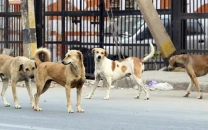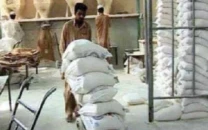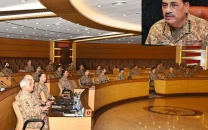A ‘biryani’ approach to poverty
Expert says in South Asia we mix and confuse content and contexts.

The keynote speaker explained that he meant in South Asia we mix and confuse content and contexts. “Man has many facets, such as cultural, political, economic and psychological ones, and it is the psychological aspect of humanity that empowers a man individually,” he said. “And this is the sector that we need to work on.” Vulnerability and poverty, the two main problems of South Asian countries, can be eradicated by investing in the poor from multiple dimensions, said the professor, who works at the International Department at the University of Dhaka. The report, ‘Poverty and Vulnerability Cycles in South Asia: Narratives of Survival and Struggle’, is a comprehensive study prepared by the South Asian Alliance for Poverty Eradication (SAAPE). Its nine chapters cover issues of seven South Asian countries, including Pakistan, India, Bangladesh, Afghanistan, Sri Lanka, Bhutan and Nepal. The ceremony was organised by the Pakistan Institute for Labor Education and Research (Piler), which has contributed a chapter.
South Asia (SA) is a region marked by high internal migration, military conflicts, attendant loss of life, critical issues of livelihood, and human rights. Out of the total 1.3 billion people below the absolute poverty line, 433 million are in SA. Moreover, illiteracy rates in SA are 2.5 times the rates in the rest of the world, the population of malnourished is three times higher, health-care facilities are 1.5 times lower than in the world and maternal deaths equal one-third of the world’s.
The report focuses on the seven vital areas that affect people’s vulnerability, namely the extraction of natural resources and food insecurity, climate change, development-induced displacement, gender, caste, ethno-religious conflicts, geopolitics, the war on terror and distress migration and labour.
Prof Aijaz Qureshi, the chairman of the Sindh Democratic Forum (SDF), focused on the situation of poverty in Sindh. Quoting excerpts from the report, he said that the province at the time of independence used to be 55 per cent richer than the rest of the provinces. That has come down to just 16 per cent. He said the situation is liable to get worse if the governance is not improved, feudalism not addressed and land reforms not introduced. Among the 20 million people displaced in Pakistan, about half are from Sindh, he said. This is an alarming situation for the province.
Ali Arsalan of Piler, who has been working in the flood-affected areas, said that the relief work has unknowingly led to two major drawbacks. First, a ‘contradiction’, which implies that the more civil society and private philanthropy is doing, the more people are letting go of their expectations of the government.
Second, is the ‘fragmentation’ that has pushed individual efforts over collective efforts. He emphasized that among people, the concept of deprivation shows that it is beyond their own control - someone else is responsible for their dilapidated status. He said that the thinking that building infrastructure will bring the lives of the affectees to normalcy is improbable and the real issues, such as land reforms and inflation, have to be addressed.
Published in The Express Tribune, October 4th, 2010.

















COMMENTS
Comments are moderated and generally will be posted if they are on-topic and not abusive.
For more information, please see our Comments FAQ